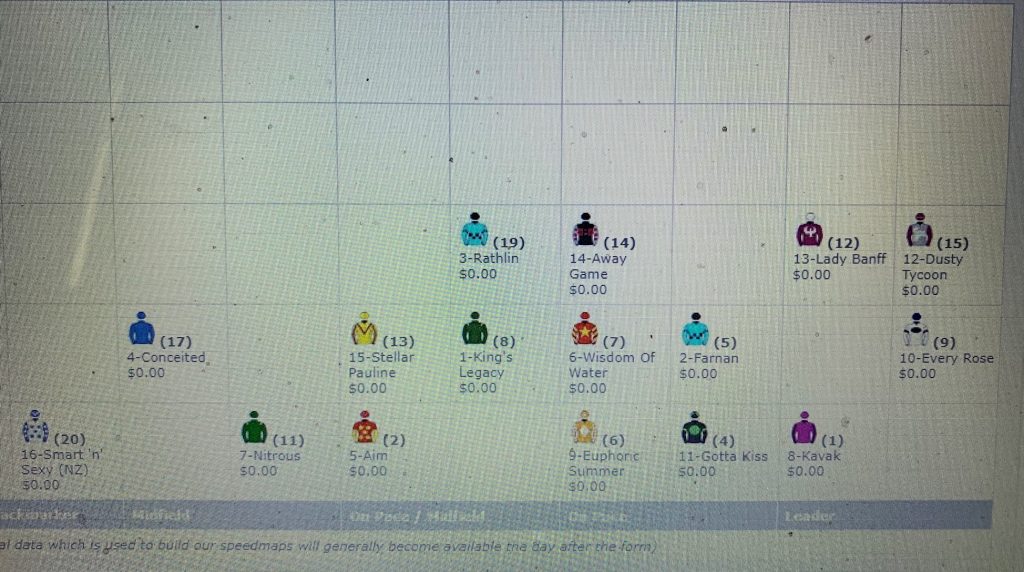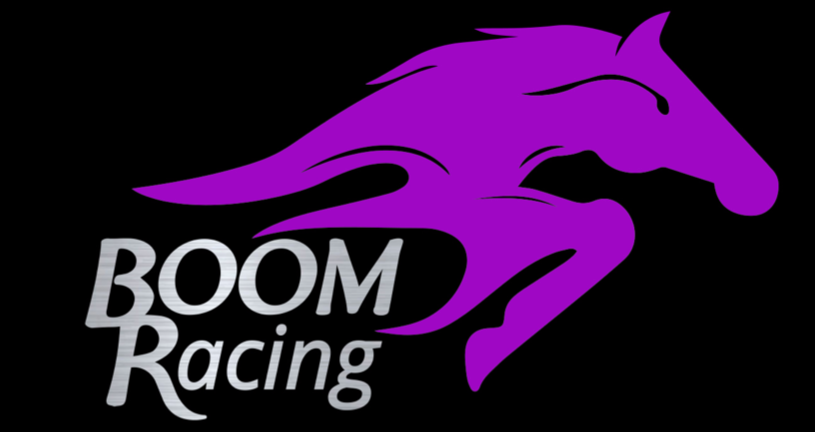Hi all,
With a lot of new followers on I thought it would be worth re-posting the Speed Maps article from last year. I like to post them up each year as people ask for them or forget what the article was.
Speed maps are a crucial tool in punting and can be the difference between a winning ticket and confetti. I have had a request to help out if possible on how I go about doing a speed map.
I don’t claim to be the best punter around (like a lot of others do) and there would be many people cover more ground then myself, but I like to help any punters where possible and have a bit of time up the sleeve so I will try to put it in a way most punters understand. First of all like most things in racing nothing is a given! Horses can miss the start, get checked etc and your map is out the window. NOBODY EVER GETS IT RIGHT EVERYTIME- whoever tells you they do is full of it and don’t listen to a word they say.
The best way to do a map is to know your horses. When you learn their patterns it is simple to know what they will do. When you get to that stage it is possible to do them in your head and you can’t put a price on that.
A lot of weekend punters don’t have time to do replays and get to know each horse’s pattern. If that’s the case the easiest way to try to map a race out is simply by using a form guide and knowing the starting points of each track.

Pace is usually dictated by
1.Barriers (Where the speed horses have drawn)
2. The starting point.(How far to the first corner etc)
And Field sizes to a smaller degree (This doesn’t really set your map, but it helps you find the winner after the race is mapped) Small fields often lead to slow run races with jockey’s able to slow up considerably. Small fields can actually turn into messy races with jockeys either taking off early or not taking any initiative and staying parked at the rear of a field and giving a horse no chance to outsprint the leaders. (A pet hate of mine)
**There are so many things to consider, but I will try to keep it as simple as possible.
*Most form guides these days will have where the horse has settled in its last handful of runs. As long as it is around the same distance range you can get a guide to where the horse is comfortable.
Most will have where the horse settled early, and where it was at the 800m and/or 400m marks. A guide like The Sportsman gives around the last 15 runs of a horse and that is a good way to see its patterns, but most guides have that in them now (best bets, winning post, even most of the newspaper formguides). You must be careful though as some people will see a horse led its last 5 runs last prep- (it may have been over 2400m and is first up over 1200m, It won’t lead them!)- for example, a local horse like LORDAG probably hasn’t got the speed over 1200m if he is fresh to sit near the lead, yet if they wanted to over 1600m-1800m he would have the speed to box seat quite easily.
Here is an example of a form guide with 800m/400m positions.
1-9 SCST 21 Oct 12 1000m Good (3Y HCP ) 3YO 54 $10,000 Ric McMahon (1) 58
2nd Buddy Rocks 56: 3rd Brilliant Rose 56: 57.08, Margin 1.0L, 4th at 800; 4th at 400; Betting $3.50/$5.50/$4.80
3-14 E FM 3 Nov 12 1000m Good (3Y HCP ) 3YO 54 $50,000 Ric McMahon (4) 55.5
1st Players Choice 54: 2nd Saluter 59: 57.29, Margin 1.1L, 6th at 800; 6th at 400; Betting $4/$3.60/$3.60F
6-13 E FM 17 Nov 12 1200m Slow (3Y HCP ) 3YO 54 $50,000 Ric McMahon (11) 55.5
1st Lucky Hussler 54: 2nd Sookie 54: 1-12.25, Margin 5.8L, 9th at 800; 8th at 400; Betting $7/$8/$8
Even looking at that can give you some guide of a races pace when you line the runners up.
THE BARRIERS are always important when doing a map. Some horses may be drawn wide who have the early pace while some inside can make the others work to get across which in turn pours the pressure on. You can then look for a horse that gets the right run with a bit of cover off the pace. On the other hand if a race seems to have little pace on paper you can be pretty confident if you like a horse that has the ability to jump and sit up on the pace as they can sprint home a fast 600m and be almost impossible to catch. Some horses may have drawn bad gates their last few but all of a sudden get gate 1 and have the ability to sit closer or even box seat. (that is why it is so important to know the horses)
The STARTING POINT is a big factor also. There are a few danger starting points in Brisbane for example as jockey’s have to make quick decisions to use some gas to get across before the corner or risk being trapped 3 wide on a hot pace. The 1010m start at Doomben has caught many out with jockeys trying to cross but not getting there in time and your ticket is confetti after being posted wide. The 1600m at Doomben is another you have to consider when doing maps for the same reason. Horses with pace drawn wide will usually push hard and hope to cross or if they usually sit midfield they may have to go all the way back to look for cover.
*Just because their pattern is to sit midfield doesn’t mean they will be there. BARRIERS and STARTING POINTS have to be considered.
This is obviously very hard to explain, especially when it’s impossible to go over everything that is a factor. I hope it has helped those interested in some way.
I will finish by saying the best way to be able to map a race is to get to know your horses. For me personally I focus simply on Brisbane racing through the midweeks and Saturdays (and other carnivals when they are on) that way you really get a good guide on the local horses and you can focus on them closely. This allows you to know how they jump, where they like to race etc. That is the information you need when mapping a race. The best way is to watch as many replays as possible and try to follow as many horses as possible. (Far easier to focus on one state)
For those looking for a place to put their own maps together most form sites have the options of speedmaps now.
**Thanks again, hopefully you’re finding a few winners. Don’t forget to ‘LIKE’ our Facebook page, follow @brissyraces on Twitter and Sign up to our FREE newsletter if you are interested (Right hand side of this page, green box)










